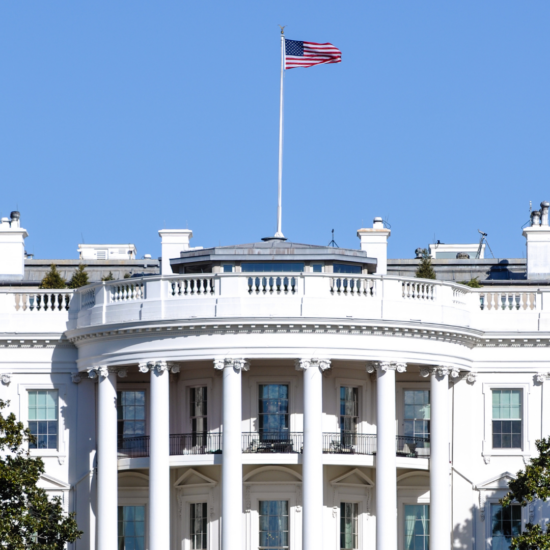DLRC Achieves Cyber Essentials Plus Certification
Published Apr 11, 2025
Published 28th January 2025

In addition to welcoming the new year, January 2025 will also mean a new presidential administration. As we have seen in years past, introducing a new executive can be a time of significant change in the biotech and pharmaceutical industry, and the return of the Trump administration will likely have a profound effect on the industry both domestically and abroad. Here at DLRC, we think critically about past policies from the first Trump administration and how these might shape the industry landscape from 2025 and beyond. With a focus on deregulation, rare disease/advanced therapies, and manufacturing, here are five areas we think will be most impacted by the new administration:
One central area of impact from the new administration will likely be within the FDA itself. Trump’s first term saw significant efforts to shorten FDA approval processes and timelines, a trend likely to continue in a second term. The Agency has also shown an interest in exploring emerging technologies like artificial intelligence (AI) in clinical trials and approvals. This could make it easier for innovative therapy companies to bring their products to market. However, there is also a risk of undermining public confidence in the FDA if accelerated processes are perceived as compromising safety and efficacy. Striking the right balance between speed and rigour will be critical for the next administration.
Rare diseases have been a growing area of focus for the biotech industry. This is thanks to strong incentives such as the Orphan Drug Act and the FDA’s expedited approval pathways. The Trump administration’s emphasis on streamlining regulatory processes during its first term meant record novel drug approvals, including for rare diseases. In 2017, 55 drugs were approved, setting a record; by comparison, only 22 novel drugs were approved the year before. In addition to these record drug approvals, 256 drugs were granted orphan designation.
Looking ahead, we will likely see continued support for these expedited pathways and special programs during this second term. This will potentially enhance the FDA’s use of Real-World Evidence (RWE) and patient-centric data to approve drugs faster. However, there could also be scrutiny over the misuse of orphan drug incentives by large pharmaceutical companies. This may prompt reforms to ensure these benefits primarily support smaller biotech firms and true unmet medical needs.
Advanced therapies such as gene and cell therapies are at the forefront of innovation in biotech. During Trump’s first term, FDA Commissioner Scott Gottlieb led the creation of new frameworks for these therapies. This included 2016’s regenerative medicine advanced therapy (RMAT) designation, which offers significant benefits to Sponsors, including early and increased FDA engagement, priority review eligibility, and regulatory flexibility. A second Trump administration will likely continue promoting innovation-friendly policies to maintain U.S. leadership in the area and other ground-breaking spaces like in vitro diagnostics (IVDs). However, Trump’s “America First” policies, a hallmark of his first presidency, could create tensions with global regulatory harmonisation efforts. This could potentially lead to divergent approval standards that complicate international market access. Sponsors focused on cutting-edge treatments must navigate these challenges while leveraging domestic incentives for innovation.
Environmental, social, and governance (ESG) compliance has become a significant focus for global pharma investors, health authority regulators and drug developers. The Trump administration has shown scepticism toward ESG frameworks during its first term. This stance could reduce regulatory emphasis on sustainability and diversity reporting requirements, such as Diversity Action Plans. While this would ease compliance burdens in the U.S., it may also create challenges for U.S.-based companies operating in global markets where ESG compliance remains a priority. Additionally, companies prioritising ESG as part of their corporate strategy may need to reconcile their goals with a potentially less supportive regulatory environment.
Trump’s “America First” trade agenda may impact the pharmaceutical industry, too, regarding manufacturing and international trade. These policies, aimed at reducing dependence on foreign manufacturers, will likely mean incentives offered to companies to bring production back to the U.S. While this could bolster domestic supply chain resilience. It may also lead to higher production costs and trade tensions, particularly with key markets like the European Union.
To be sure, the return of a Trump administration will bring a mix of opportunities and challenges for the U.S. biotech and pharmaceutical industry. While policies favouring deregulation and innovation incentives could spur growth in rare diseases, advanced therapies, and IVDs, pressures on domestic manufacturing and ESG compliance could complicate operations. Industry stakeholders must remain agile, balancing short-term policy shifts with long-term strategies to maintain competitiveness and advance medical innovation in an increasingly complex global environment.
Need expert guidance on adapting to the new FDA leadership and regulatory changes in 2025? DLRC’s regulatory specialists provide strategic support for pharmaceutical and biotech companies navigating these evolving compliance requirements. Contact our team at hello@dlrcgroup.com to develop a robust regulatory strategy aligned with the new administration’s policies.

Published Apr 11, 2025

Published Mar 06, 2025

Published Feb 26, 2025

Published Feb 25, 2025

Published Feb 03, 2025

Published Feb 03, 2025

Published Jan 30, 2025

Published Jan 30, 2025

Published Jan 28, 2025